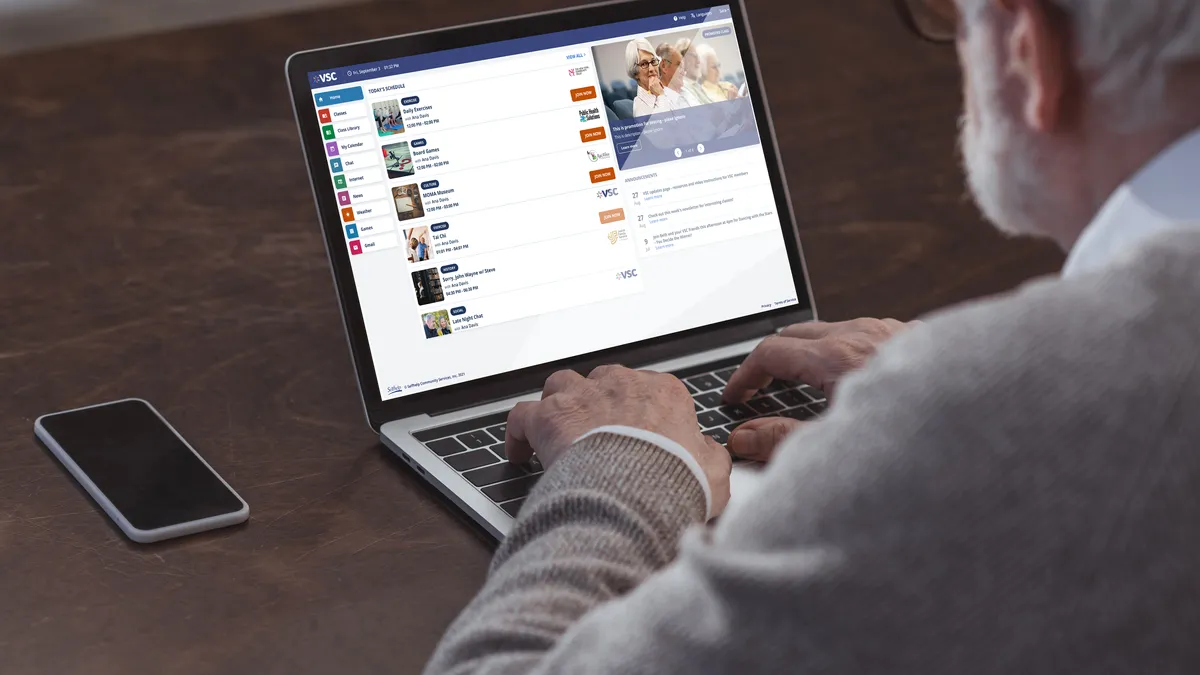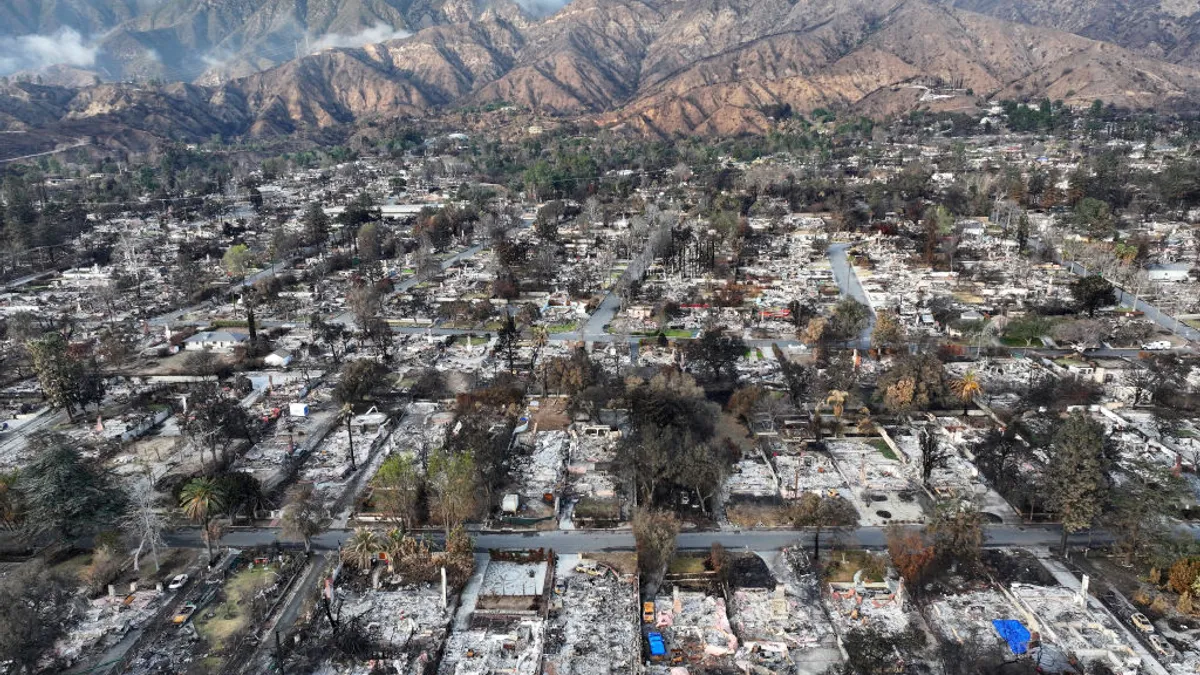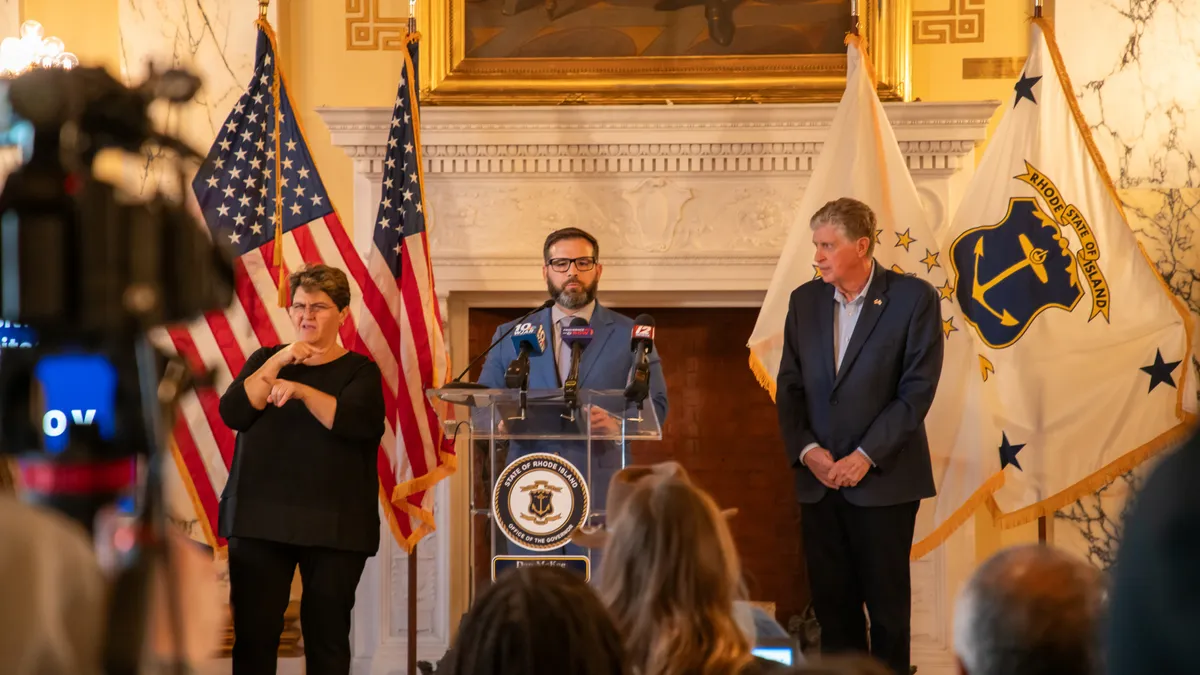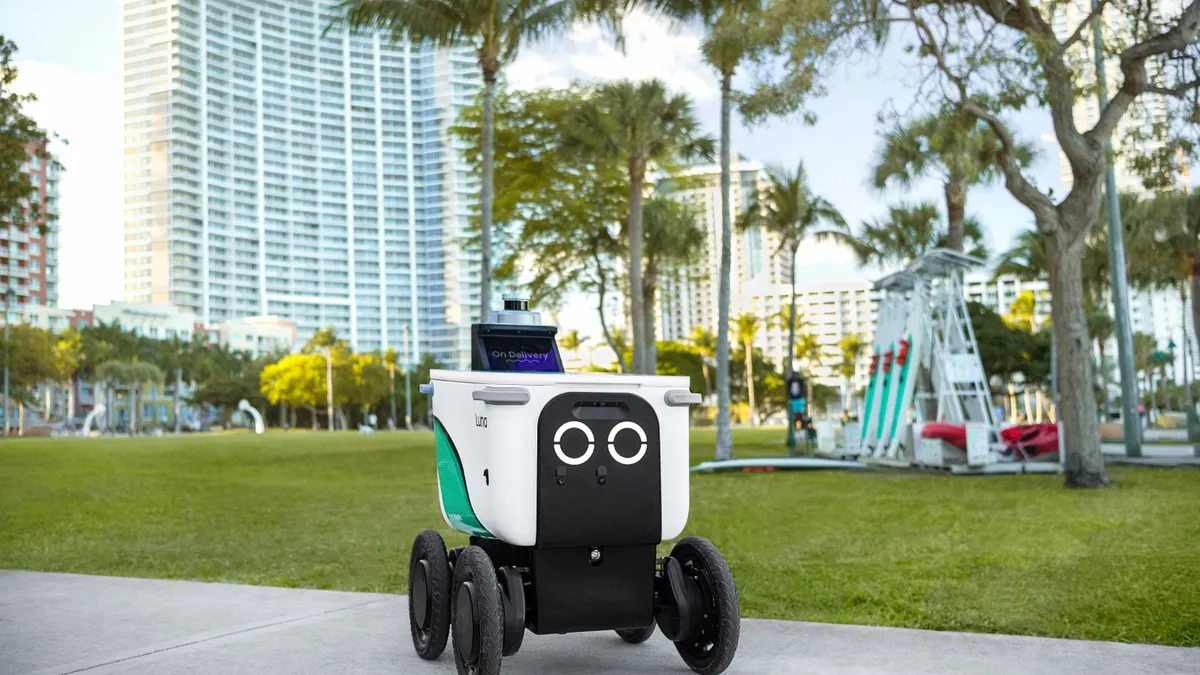Editor’s note: With U.S. Surgeon General Vivek Murthy declaring May 2 that the U.S. is facing an “epidemic of loneliness and isolation," Smart Cities Dive editors wanted to highlight this January 2022 story on how communities were addressing loneliness among the elderly during the pandemic.
Before the pandemic, New Jersey resident and senior citizen, Susan Schwitzer did not know what Zoom was. Today, she is "Zooming" some days from 9 a.m. to 9 p.m., participating as an active and enthusiastic member of a virtual senior center led by Selfhelp, a New York-based nonprofit that provides human services to elderly New Yorkers, including Holocaust survivors.
At the start of the pandemic, Schwitzer said, she was getting tired of watching movies and television shows all day long. "You can only read so much," she said. Now that she has joined the virtual center, her days are filled with online socializing and classes that run the gamut of chair tai chi, self-care, history, crime mysteries and computer lessons. It was like "a whole other world opened up," Schwitzer said. The center has helped her keep in touch with the outside world, she said.
The internet and related technology have been crucial for keeping older adults — including Susan and her friends at the center — connected during the pandemic.
As the COVID pandemic approaches its second anniversary, and as cities prepare for a wave of federal broadband investments, some local leaders are seizing that opportunity to help close the gaping digital divide for seniors. By doing so, they hope to address what a report last year from the AARP Foundation and the United Health Foundation called "an epidemic of loneliness and social isolation among adults."
Mental and physical health concerns
As the pandemic has exacerbated loneliness among many city residents, mental health has risen to the top of U.S. mayors' concerns regarding the pandemic's long-term impacts.
The health consequences of loneliness are significant. Social isolation can severely increase an individual’s risk of premature death from all causes, according to the Centers for Disease Control and Prevention, "a risk that may rival those of smoking, obesity and physical inactivity."
Digital isolation can also come with serious health risks. Over 80% of COVID deaths have been among individuals over 65 years old, and 40% of those adults likely lacked access to online resources like telemedicine and social connectedness, according to a report released in early 2021 by the Humana Foundation and Older Adults Technology Services (OATS), a New York-based nonprofit affiliated with AARP that engages and trains older adults across the U.S. in using technology.
Getting older adults connected to the internet is not only good for their mental and physical health, but it’s also good for local economies, said OATS Executive Director Tom Kamber. The nonprofit has found that when older adults learn to use technology, they also start businesses, work longer and are more active in their communities.
Making digital connections
Although the U.S. still has a long way to go to close the digital divide among older adults — 58% of adults age 65 and older have in-home wireline broadband access, compared with 73% of adults ages 18 to 64, according to OATS — the pandemic helped kick-start many efforts to get older adults online and active within digital communities.
At the onset of the pandemic, OATS was one of many organizations to quickly transition their services online. To do that, the group developed telephone hotlines and made outbound calls to help seniors get onto Zoom, ultimately reaching thousands of older adults, according to Aaron Santis, program lead in Colorado for Senior Planet, the proprietary program of OATS from AARP.
In addition to moving all of its programming online, the group offered tech lectures on topics that addressed questions like: How do I use Netflix? What is a podcast? What is cloud storage? It also helped seniors get familiar with their devices, teaching basic functionalities like how to use the mute button, said Ryan Kawamoto, regional director of Senior Planet in Palo Alto, California.
OATS has also shown that its programming helps improve social connectedness. OATS' Senior Planet San Antonio program has helped local residents over the age of 60 maintain social connections via free access to internet-connected devices, a technology-training curriculum and other efforts.
In 2019, 88% of seniors participating in the program were found to have achieved "measurable improvements" in their social connectedness, OATS reports. Seniors also reported an increase in 1.56 "healthy days" per month, on average. Healthy days are the CDC-defined measurement of health-related quality of life.
"The solution to isolation is not just to say we are going to give everyone an iPad. But what are they going to do with it?... How will it enhance their ability to age well?"

Laura Trejo
General Manager of the Los Angeles Department of Aging
Selfhelp also uses a "loneliness index" to measure how individuals are feeling at various stages of using the nonprofit’s virtual senior center. The center, which now has about 1,200 participants on its virtual platform, has a direct impact on people’s loneliness and has decreased feelings of social isolation, SelfHelp Chief Operating Officer Russell Lusak said.
And while the use of the internet and social media may be correlated with feelings of isolation in certain instances for younger adults, that’s not always the case for older adults.
Evidence shows that older adults actually do well on the internet psychologically, and they don’t use it the same way as younger adults do, said Linda P. Fried, director of the Robert N. Butler Columbia Aging Center at the Columbia Mailman School of Public Health, during a session earlier this year at the Columbia University Age Boom Academy, a program designed to train journalists on the challenges facing aging populations.
'Deconstructing' the barriers to getting online
Getting older adults online can be more complex than just giving individuals devices and teaching them how to use the technology.
"The solution to isolation is not just to say we are going to give everyone an iPad," said Laura Trejo, general manager of the Los Angeles Department of Aging. "What are they going to do with it? What is the programming? What is the content? And how will it enhance their ability to age well?"
The Los Angeles Department of Aging, which receives $40 million a year, on average, from federal, state and local sources, aims to "deconstruct" the barriers that keep older adults from getting digitally connected, according to Trejo.
Many local residents are on low-income phone plans, for example, which limit their data and the number of calls they can make, she said. Those individuals have to be very prudent with their resources. "How do we make things more accessible to them," she asked. "How can we use resources coming into our city to expand Wi-Fi in a way that allows seniors to access it without their own data plan?"
To get around those types of barriers, leaders in the Los Angeles region aim to use an aging-friendly lens. Instead of asking older adults to complete an application online, for instance, local leaders will mail physical copies of applications, highlight the sections where the older adult needs to fill out the information and include a pre-addressed return envelope to ensure the application’s success.
A lack of familiarity with platforms like email or social media can also present challenges for keeping older adults connected to others online.
The nonprofit Sourcewise, the designated area agency on aging within Santa Clara County, California, conducted a "shelter-in-place impact survey" last year, finding that many local older adults were struggling to access technology and recreation services in their area. Older adults also reported heightened feelings of loneliness and isolation from their lack of normal in-person recreational programs, according to Elizabeth Brown, Sourcewise area planner.
In response to those findings, the agency helped support local efforts for older adults, including Latinx and Asian American populations, to access remote programming designed to increase their confidence in navigating technology. Courses have included lessons on using devices, Facebook and email.
"One of the most important resources for getting through the pandemic was the resilience of older people."

Tom Kamber
Executive Director of Older Adults Technology Services
Santa Clara County is in the heart of Silicon Valley, thus it has a big responsibility to meet the technology needs of its adults, she said.
Sourcewise is also working in partnership with Google to provide about 1,300 Google Home smart speakers and subsidized internet for a year to eligible adults.
The recipients have used the speakers in a variety of ways so far, Brown said. Older adults will ask the speaker to tell them a joke, check for new movies or listen to music. Caregivers also use the speakers to set reminders for their loved ones to drink water, take their medication or water the plants.
Federal investments to come
Federal investments could also help get more seniors online and digitally connected to friends and family.
The federal emergency broadband benefit has been helpful with getting older adults online, Trejo said. Over 7 million U.S. families have used the benefit, according to AARP, with 40% of those families including an individual who is older than 50, as of this fall.
The Infrastructure Investment and Jobs Act will invest $65 billion to expand broadband. Of that total, $14.2 billion will make the emergency broadband program permanent come January, renaming it the Affordable Connectivity Program. The revised program will provide $30 a month for qualifying households instead of the $50 currently provided.
The federal investment can also help seniors purchase new devices. Eligible households can receive a one-time $100 discount to buy a laptop, desktop or tablet under certain conditions.
Despite these efforts, "urban internet deserts" remain in cities, according to Majd Alwan, executive director of the LeadingAge Center for Aging Services Technologies. The application process itself can be a barrier for some services, he said. For example, certain applications for discounted internet are intended for an individual to complete, whereas in some cases it would be more efficient for an affordable housing provider — not the individuals — to apply for the services in bulk, Alwan said.
Looking ahead, as federal and local leaders continue to navigate those challenges and adapt to the pandemic, OATS’ Kamber said those leaders should look no further than the older adults in their communities.
"One of the most important resources for getting through the pandemic was the resilience of older people," Kamber said. "They lived through Watergate; they lived through the Vietnam War; they lived through 9/11."
As we’re emerging from COVID, are we going to just go back to doing bingo at the senior center, he asked. How can a smart city take advantage of the lessons learned over the past two years, he said, adapting funding and local programming to reinforce and capture the energy and creativity that came from older adults?




















